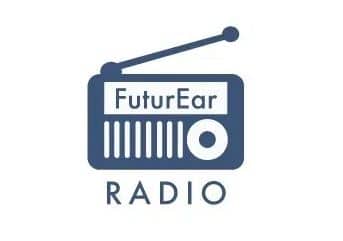Those of you attempting to follow this series may have concluded what I have about HEARx: like Dracula, it just won’t die! As one insider put it,
“It was a publicly traded company but most of the stock was not owned by the public. They always showed a loss and just kept issuing more and more shares” {{1}}[[1]]Support for this view comes from HEARx itself: “Revenues for fiscal 1995 totalled $11,170,068 vs. $4,331,148 for 1994, while the loss for 1995 was $2,213,453 or 5 cents per share vs. $2,105,635 or 6 cents per share for 1994. Weighted average of Common Stock Outstanding in 1995 was 45,164,091 vs. 36,278,205 in 1994.” [[1]]
A year in the life of HEARx reads like a vampire series: In 1996, 130,000,000 shares of Common Stock were authorized; there were more stock conversions than you could count; $10,036,507 in dividends were either deemed or left the building; a “private placement” share purchase netted $9.7 million to HEARx; the Scientific Advisory Board shrank by one member who went full time as a VP (Dr. Northern); and HEARx lost the Humana contract that accounted for 18% of its total revenues.
The disconnect between Corporate and Clinical was profound. In the trenches, every office was equipped with an expensive defibrillation unit and office staff had to be certified in CPR. HEARx’s version of the medical model of hearing aid dispensing seemed to overlook patients with hearing loss as stakeholders, but attended carefully to those who had acute heart problems. The Central Office micromanaged from a new and bigger space, where Customer Service for all offices was handled in a single “giant” room. Per the insider quoted above, there was “no responsibility at individual clinic levels and no one had control but the Central office back in Florida.”
It went on like this for years and it’s a wonder that everyone didn’t quit out of sheer fatigue, boredom, terror, or loss of blood. Finally, HEARx snatched victory from the jaws of defeat one more time by issuing a 1:10 reverse stock split in 1999.
Reverse splits are something publicly traded companies may do– if their Boards allow it–when they’re in trouble and trying to stop the fall of their share prices{{2}}[[2]]http://www.online-stock-trading-guide.com/reverse-stock-split.html[[2]]. The purpose is to reduce total shares outstanding and increase the price of an individual share. Wierdly, though mathematically predictable, this leaves the total value of all shares (the “Market Cap”) unchanged. For instance, if Little Hearing Aid Company has 1000 shares selling at $1 each, it can do a 1:10 reverse stock split to reduce the total number of shares to 100 at a value of $10 each. Either way, Little Hearing Aid Company’s Market Cap remains $1000.
Why bother, you ask? One common reason is to give the appearance that the company’s stock is more valuable, since $10 is more than $1. Another common reason is to increase the value of a share so that it appeals to institutional and mutual fund investors that require a minimum share price for purchase and inclusion in their portfolios.
Here’s the HEARx Central Office spin, paring its outstanding shares down from 200 million, if my math is right{{3}}[[3]]HEARx Ltd. reduces outstanding stock. South FloridaBusiness Journal. Friday, June 11, 1999. http://www.bizjournals.com/southflorida/stories/1999/06/07/daily21.html [[3]]:
The stockholders of HEARx Ltd. (AMEX: EAR) re-elected all its directors and overwhelmingly approved a one-for-ten reverse stock split and a reduction in the authorized shares of common stock to 20 million. The reverse split, which will go into effect by June 30, was made because the company wants to attract greater institutional interest and encourage brokerage firms to recommend HEARx shares to their clients.
How’d that work out for HEARx? Well, GOOD of course, since HEARx is immortal. According to the 2000 annual report,{{4}}[[4]]SEC Form 10-K HEARx Annual Report. 2000. [[4]] HEARx closed 12 offices in the northeast, opened 16 in California, hooked up with Reader’s Digest and Time Magazine, added two members to their Scientific Board (Drs Lou Beck and Bruce Ganz), opened a National Call Center, issued and converted bunches of stock as usual, paid out or deemed over $1 million in dividends, doubled its gross revenues while racking up operating losses of over $4.5 million, and noted (without apparent irony) that “The Company has historically been successful in raising capital when needed and continues to have contact with investment bankers and lending institutions.”
Like Dracula, HEARx won’t die. But it’s draining the life out of me and I’m beginning to feel invested, so this post is my silver bullet to that company. I’m happy to say that next week’s post looks at Helix, a nice Canadian company destined to be the Bride of Dracula. AAAAAH!!
Photo is a scene from Tod Browning’s 1931 film Dracula.







